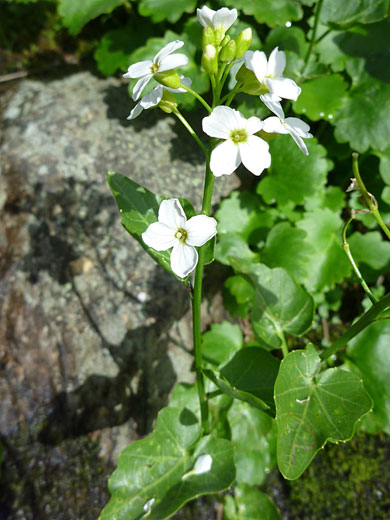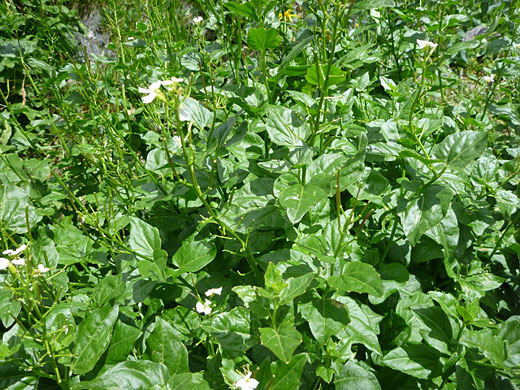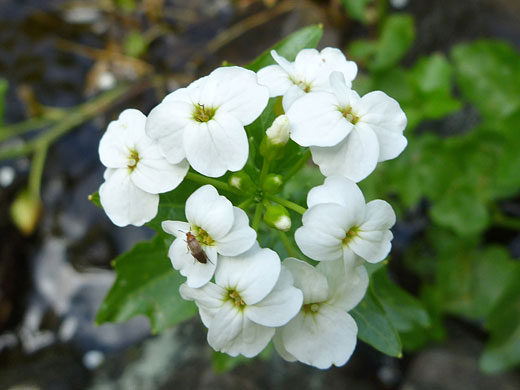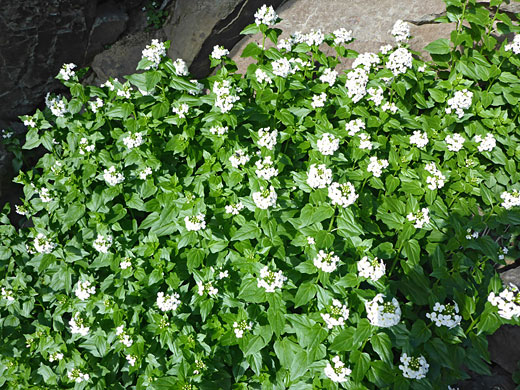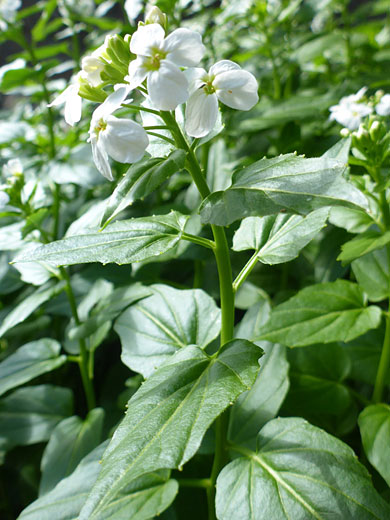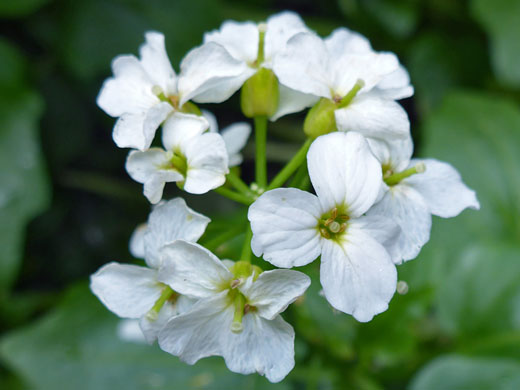Cardamine Cordifolia, Heartleaf Bittercress
Plants > Wildflowers > Brassicaceae > Cardamine Cordifolia

Four-petaled flowers of heartleaf bittercress (cardamine cordifolia) in Rocky Mountain National Park, Colorado
Common name:
Heartleaf bittercress
Family:
Scientific name:
Cardamine cordifolia
Main flower color:
Range:
From the Pacific Northwest to the southern Rocky Mountains, and neighboring areas
Height:
Up to 30 inches
Habitat:
Moist, mountainous locations: streamsides, meadows, lakeshores; 2,000 to 12,000 feet. Often in or near running water
Leaves:
Heart-shaped, with wavy or shallowly lobed edges. Up to 4 inches long. Hairy or hairless
Season:
June to September
Cardamine cordifolia spreads readily via underground runners, producing upright green stems which have large green leaves at intervals and four-petaled white flowers at the tip and at the upper leaf axils. Colonies can contain hundreds of stems. The heart- or kidney-shaped leaves are green and shiny, with gently scalloped edges, and a few prominent veins radiating from the stalk attachment point. The stalks measure from 2 to 5 times the length of the leaf. The precise leaf shape, and degree of hair covering, are quite variable.
The mostly pure white petals are between half and 3/4 of an inch in length, obovate in shape, greenish yellow at the base and also have a few veins. Underneath are four smaller green sepals, lacking any hairs.
The mostly pure white petals are between half and 3/4 of an inch in length, obovate in shape, greenish yellow at the base and also have a few veins. Underneath are four smaller green sepals, lacking any hairs.
All Contents © Copyright The American Southwest | Comments and Questions | Contribute | Site Map

